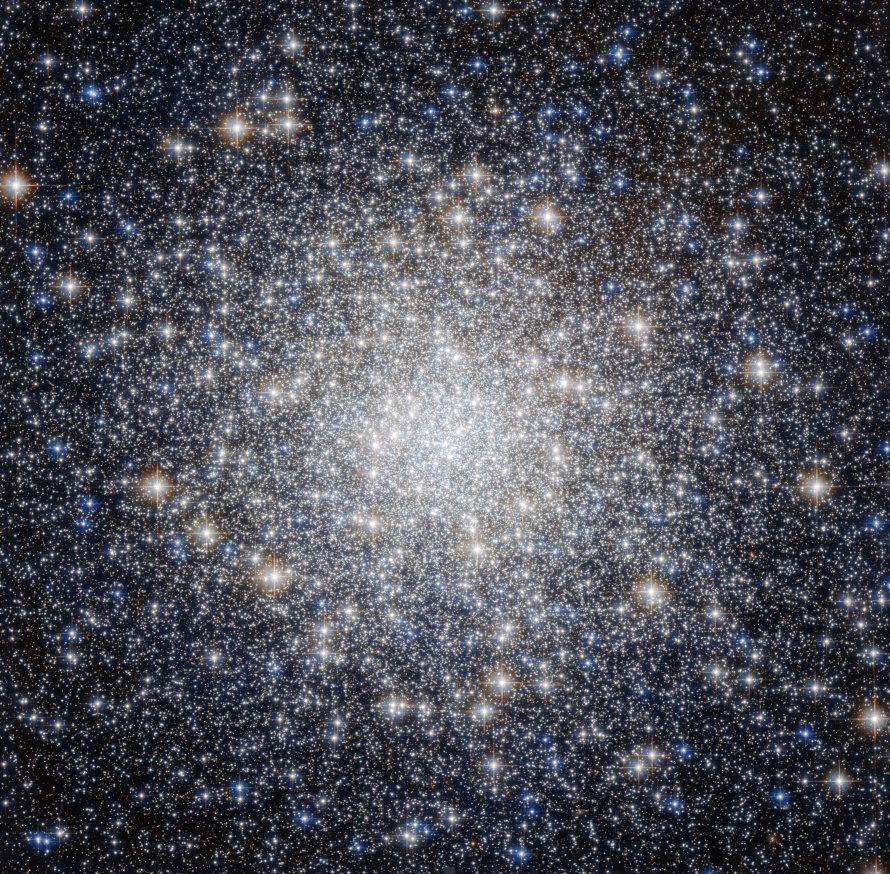M92 (NGC 6341)
Messier 92 (NGC 6341) is a globular cluster located in the constellation Hercules, in the Galactic Center of the Milky Way Galaxy in the Local Group of galaxies. M92 is 26700 light years away from Earth.
M92 is best viewed during mid-summer, is magnitude 6.3, and can be viewed with binoculars. M92 is 14' in apparent size. For reference, the full moon is 30'.
Observing difficulty: Easy
- Name:
- Type:
- globular cluster
- Constellation:
- Hercules
- NGC or IC:
- NGC 6341
- Magnitude:
- 6.3
- Viewing:
- binoculars
- Size:
- 14'
- Distance (light years):
- 26700 LY
- RA:
- 17h 17.1m
- Dec:
- 43 8'
- Season:
- mid-summer
- Milky Way location:
- Galactic Center
- Galaxy group:
- Local Group
- Messier Marathon #:
- 70
* The naked eye can see up to magnitude ~7-8 objects under ideal dark sky conditions.
A Closer Look at One of the Brightest Globular Clusters
Messier 92 (M92), also cataloged as NGC 6341, is a globular cluster located in the northern constellation of Hercules. Discovered by Johann Elert Bode in 1777 and later cataloged by Charles Messier in 1781, M92 is often overshadowed by the more popular Messier 13, yet it is one of the brightest globular clusters in the Northern Hemisphere and offers an intriguing subject for observation and study.
Characteristics of Messier 92
M92 is one of the older globular clusters within our Milky Way galaxy, with an estimated age of around 14.2 billion years, nearly the age of the Universe itself. This makes M92 a particularly valuable object for astronomical research, as studying these ancient stellar populations can provide key insights into the early stages of galaxy formation and the evolution of the Universe.
The cluster hosts several hundred thousand stars densely packed in a roughly spherical shape. It spans about 110 light-years in diameter, with the central core accounting for about 34 light-years. Interestingly, M92 contains a relatively low number of variable stars ? just 28 identified as of my knowledge cutoff in September 2021. This is in contrast to many other globular clusters, which are often teeming with variable stars.
Magnitude and Distance
Messier 92 has an apparent magnitude of 6.3, placing it at the threshold of visibility to the naked eye under excellent dark-sky conditions. However, it is more readily observed using binoculars or a small telescope, which reveal it as a fuzzy, round patch of light. Its absolute magnitude is -8.2, which underscores its intrinsic brightness. The cluster is located at a distance of about 26,700 light-years from Earth.
Finding and Observing Messier 92
M92 is found in the constellation Hercules, near the border with Draco. It lies about 9 degrees to the north of the bright star Eta Herculis, which forms part of the Keystone asterism, a distinctive quadrangular figure in Hercules that is often used as a guide to locate both M92 and the more famous Hercules Globular Cluster, M13.
When observing M92 through a small telescope, the cluster appears as a bright, circular glow. With larger telescopes, especially under dark skies, the outer regions of the cluster begin to resolve into individual stars. The view of M92 can be quite spectacular when observed under optimal conditions, as the cluster's high concentration of stars towards the core creates a radiant effect against the darkness of space.
Messier 92 may not be as famous as some other Messier objects, but its brightness, relative ease of finding, and the rich stellar population make it an attractive target for both amateur stargazers and professional astronomers. Its age and position also lend it significant scientific importance, as the study of such clusters aids in the ongoing quest to understand the history and evolution of our galaxy.



